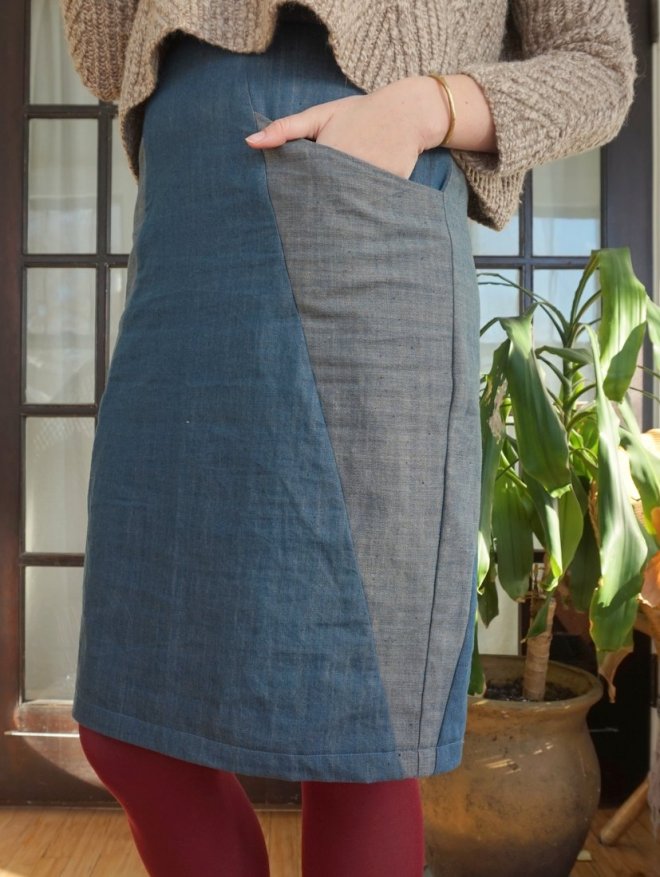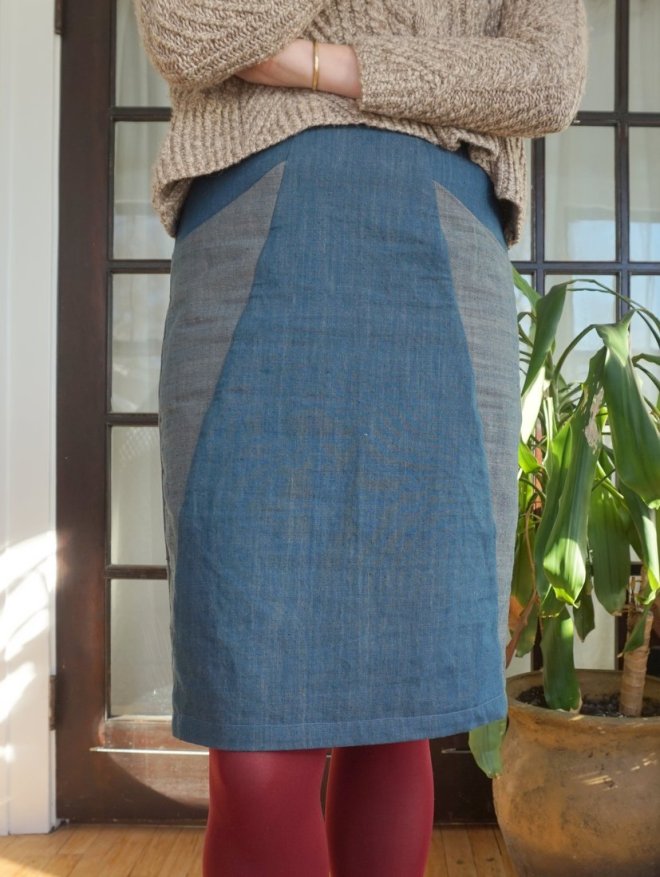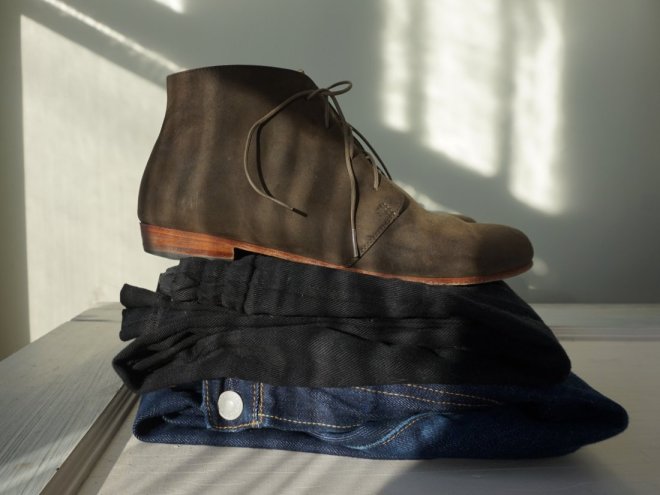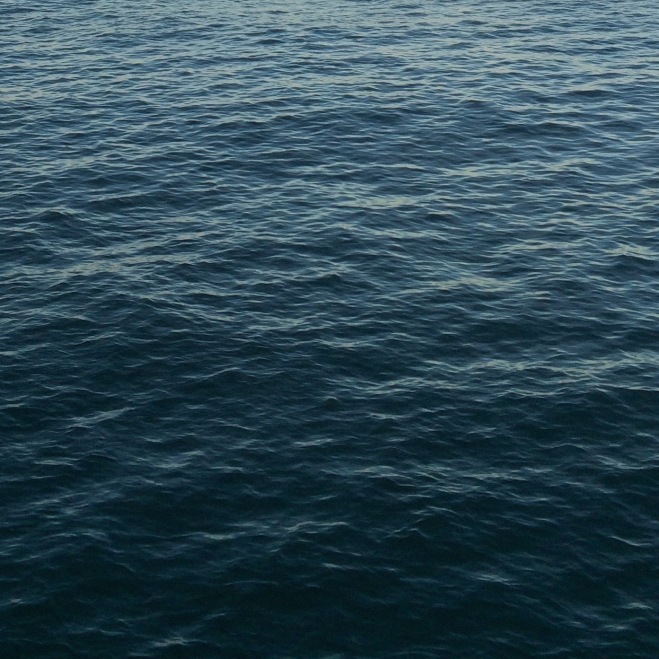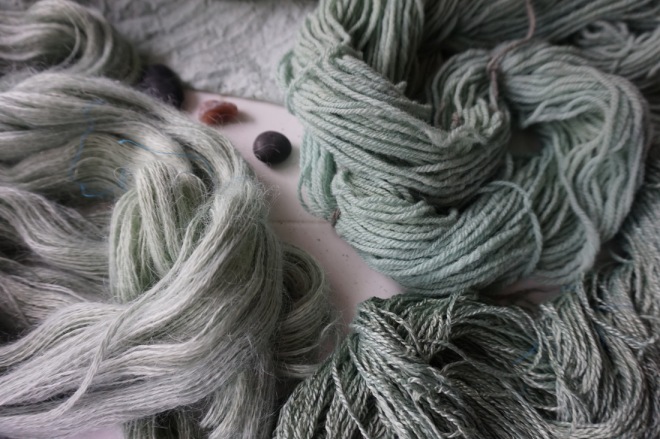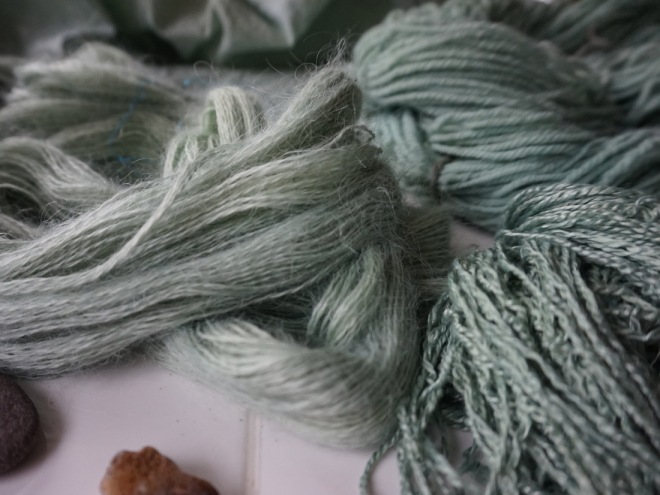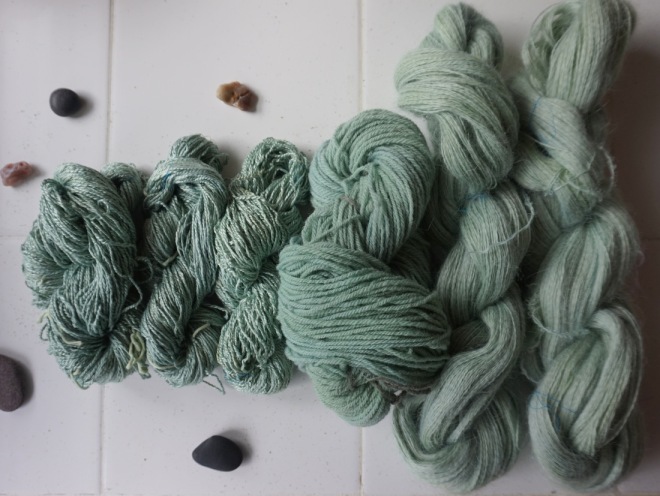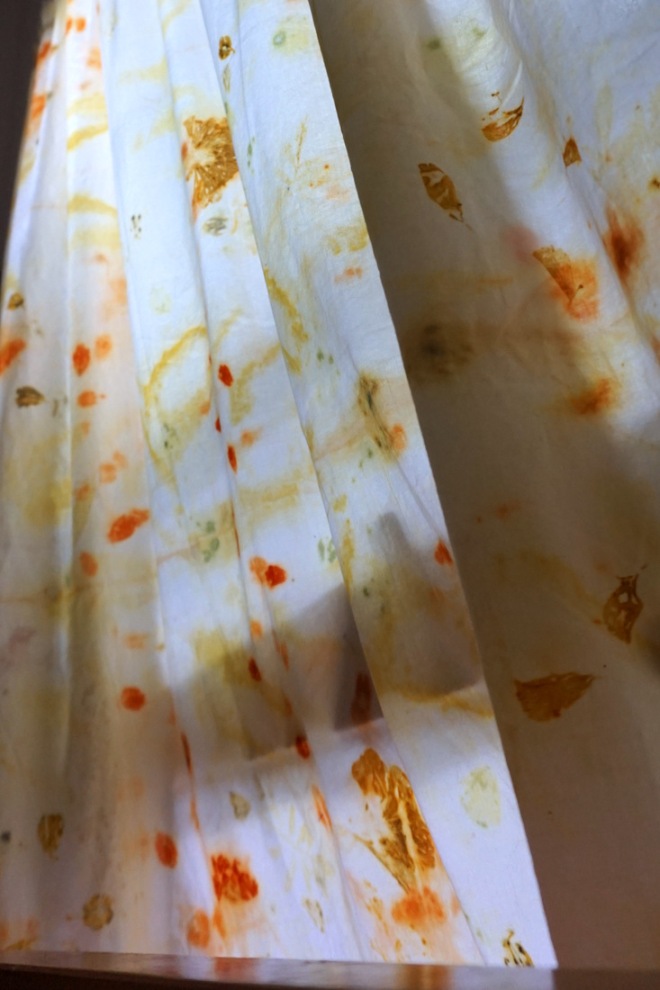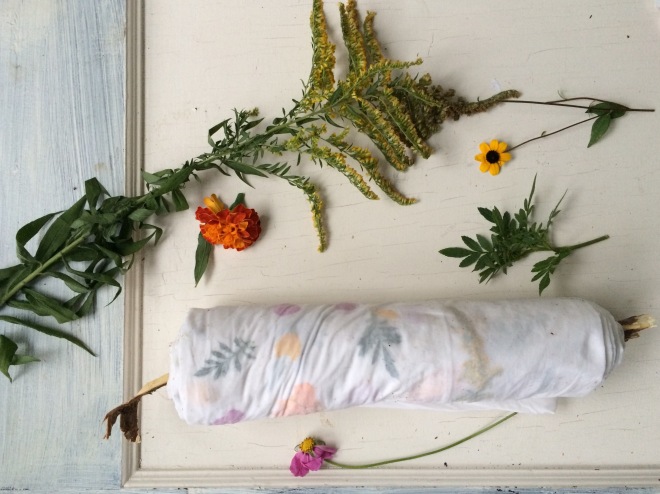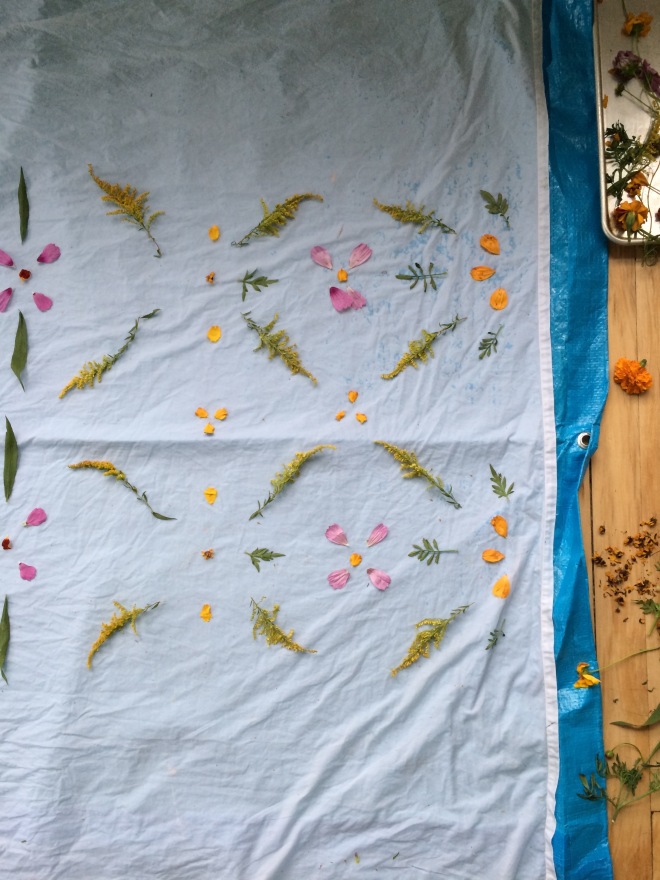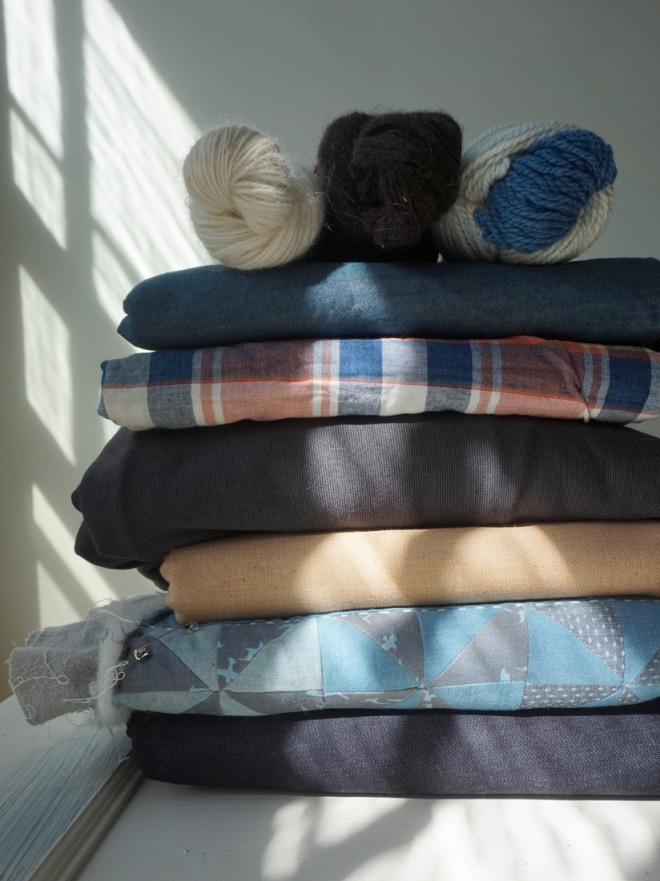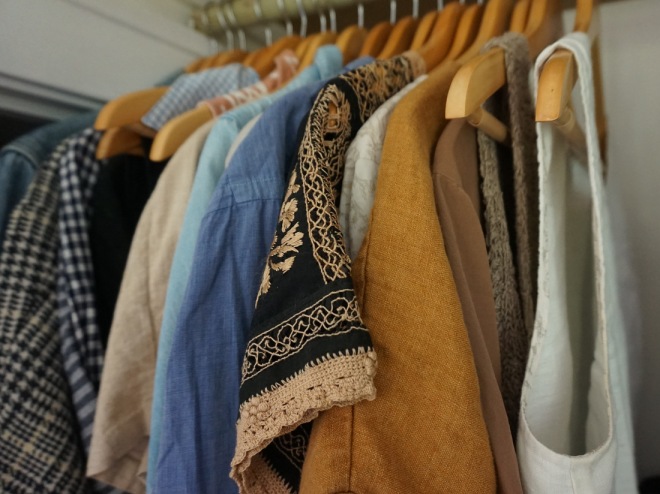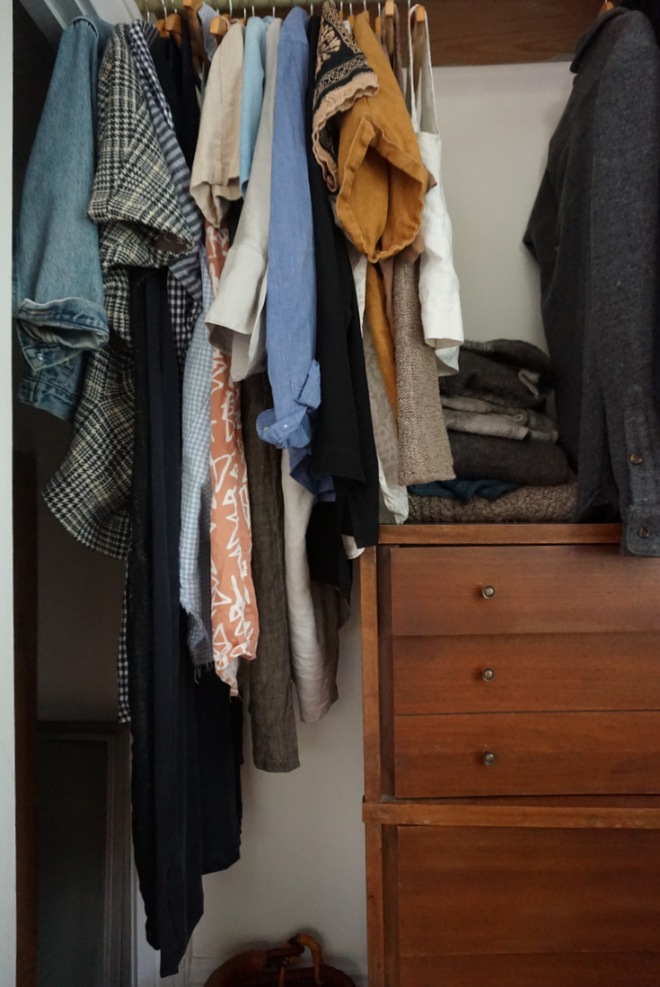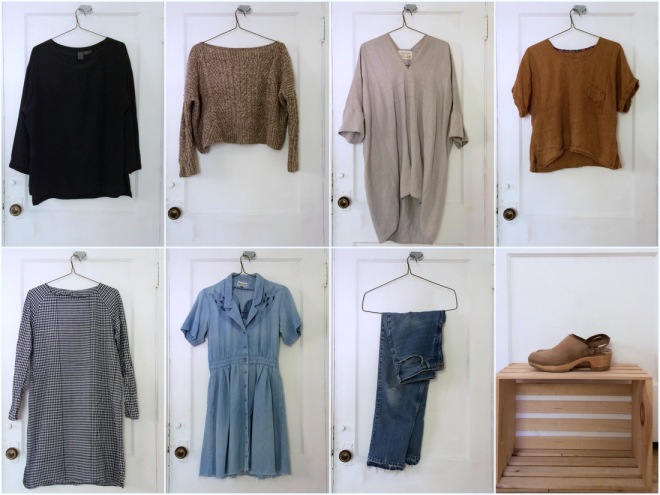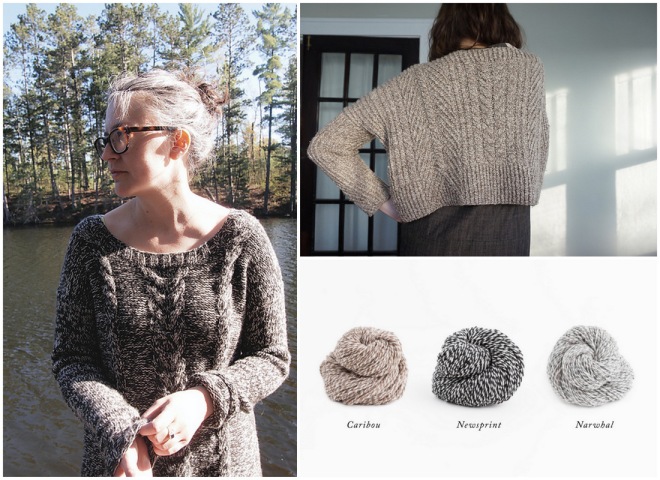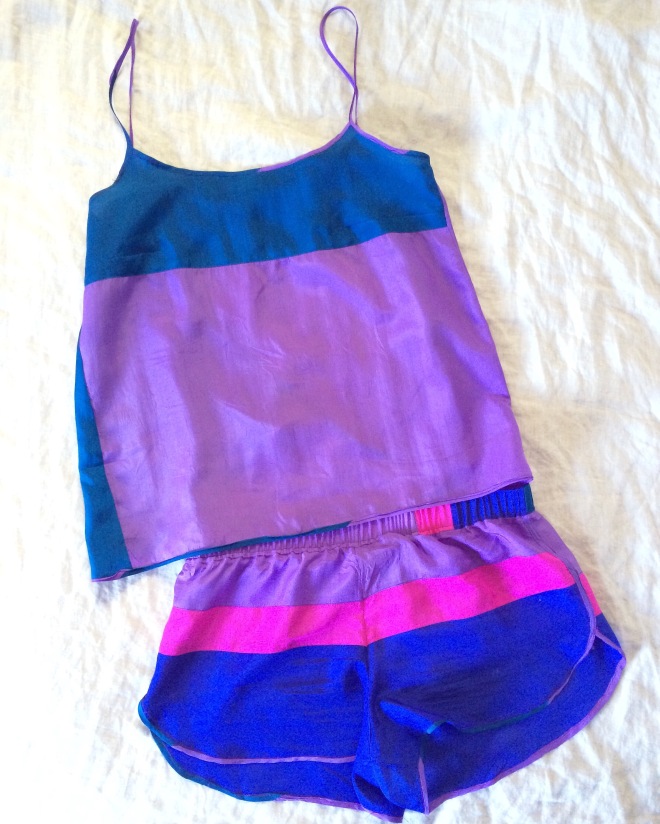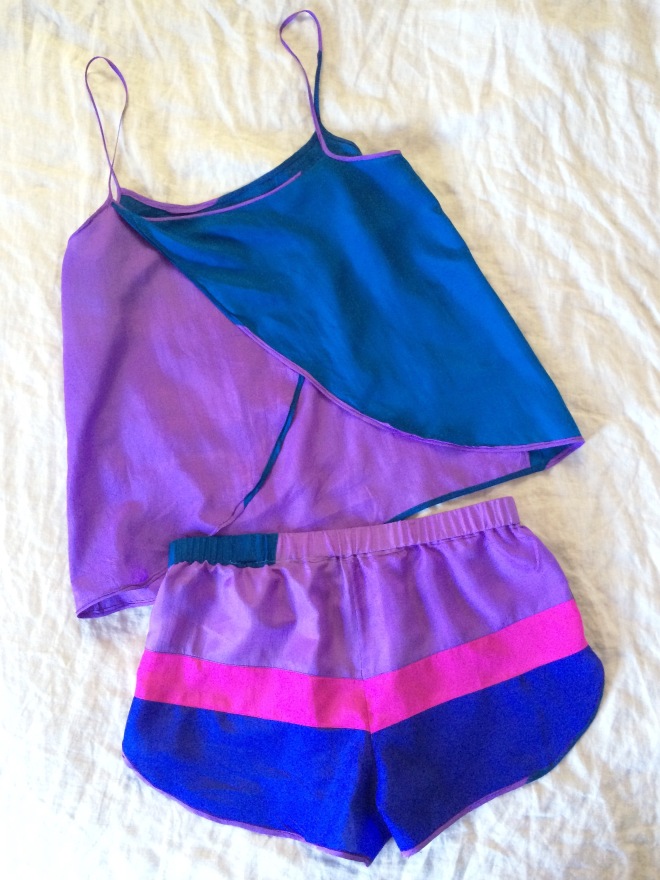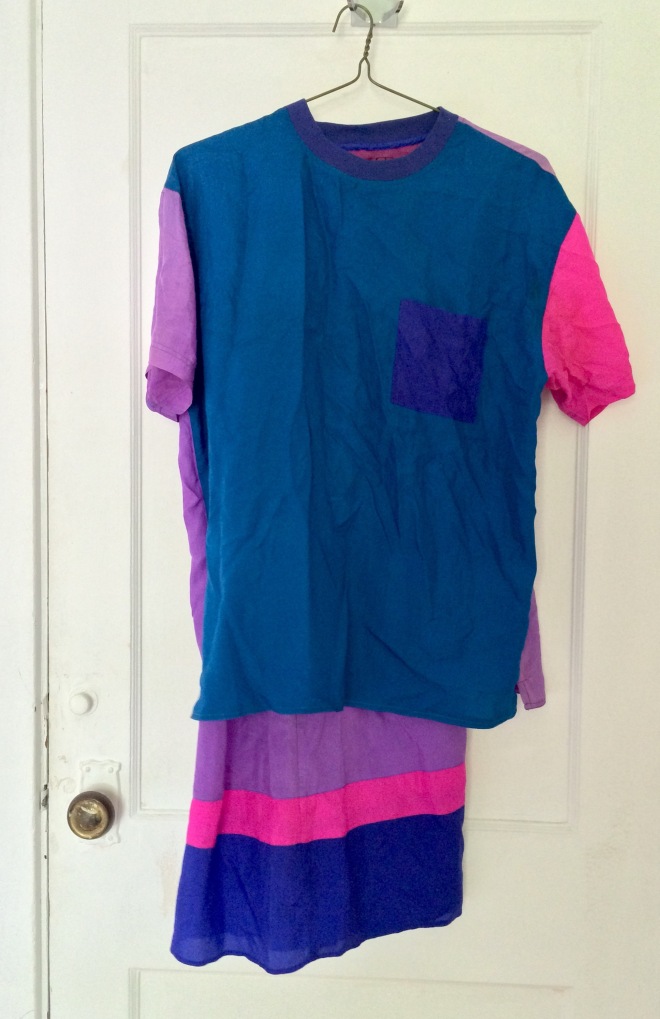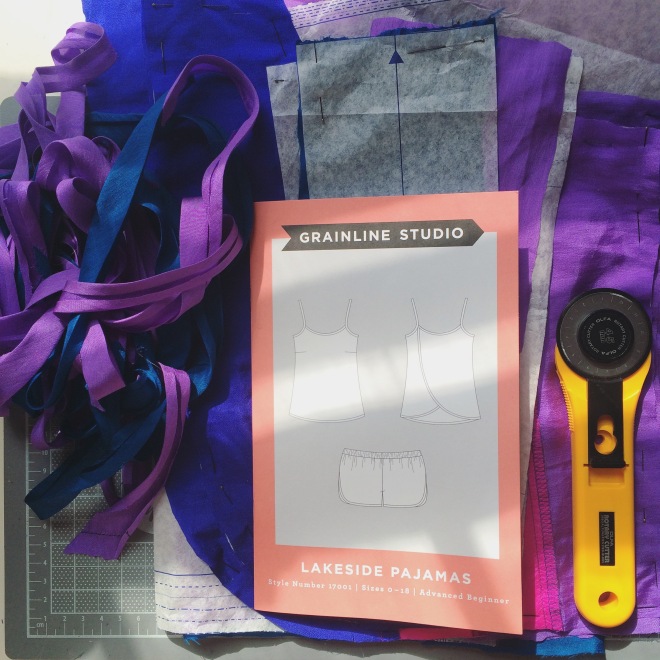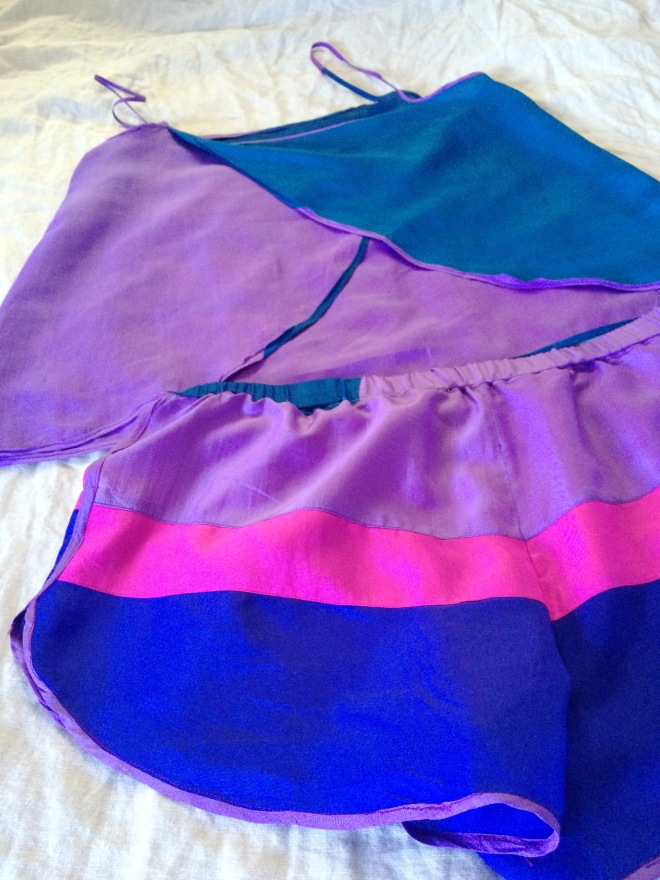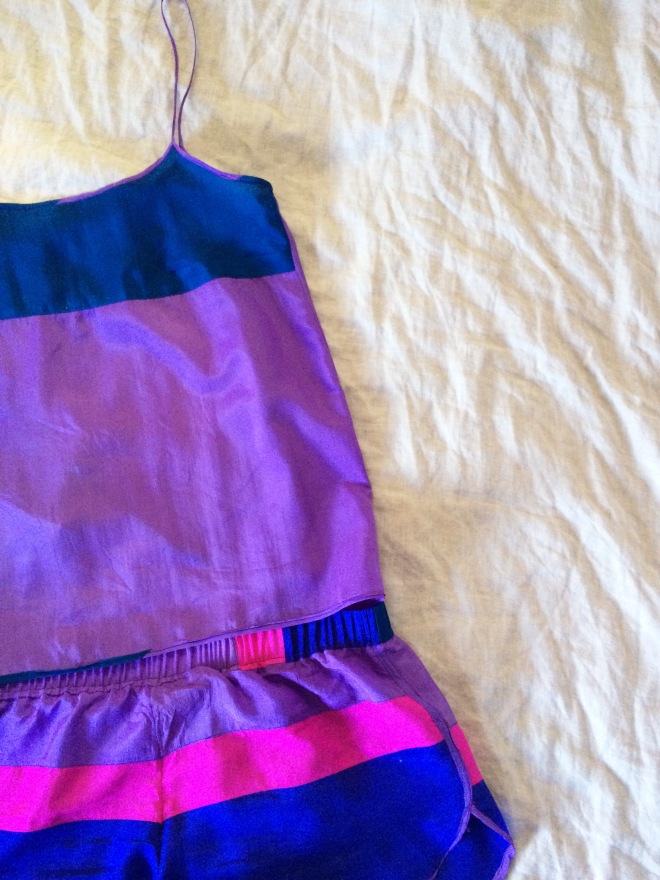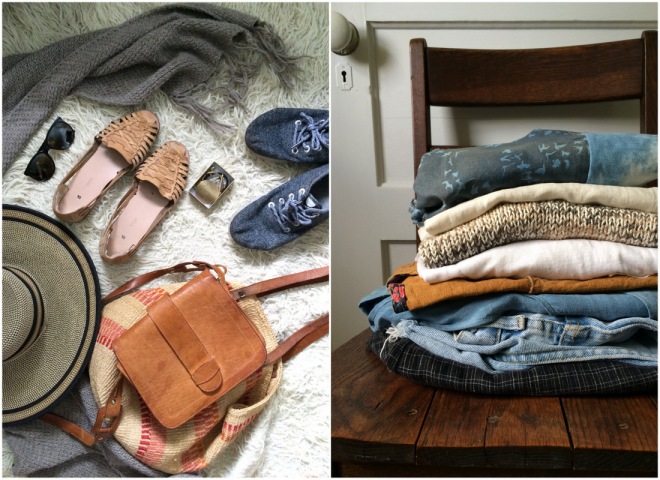
What I wore
Looking back, I had a few clear summer silhouettes:
- Sleeveless, boxy cropped shirt + high waist + sandals. In heavy rotation were my self-drafted crop top, my blue striped t-shirt, my knit beach tank, mixed and matched with my cut-off jean shorts, vintage linen wide-leg pants, thrifted high-waist non-stretch jeans, and paired with my Birkenstock sandals or Zuzii sandals (which I bought for a wedding and have proved quite versatile).
- Breezy dress with pockets + sandals or sneakers. For me, dresses are the easiest thing to wear in the summer, and can be styled a little differently (more casual or a more refined) depending on shoes or jewelry. My most-reached for this summer were my wabi-sabi Dress No. 1, my hacked V1482, and my Charlotte Kan tie dress (see below). I love me-made dresses because I can make sure the length is in my comfort zone, and I can always add pockets.
- Wide-legged jumpsuit (sometimes layered under a top) + sandals. For hot and sticky weather, and bike riding all over town, my two jumpsuits were perfect and fun: one is a vintage linen style that I bought on ebay and dyed in indigo, and the other is a black organic cotton Sallie jumpsuit that I made last summer.
And a quick shout-out to a couple of me-made favorites that were in heavy rotation but never got a full blog post: tops and dresses made from Charlotte Kan Pocket-T and Tie Dress patterns:

From left: I first made the Tie Dress in a linen-cotton blend last summer as a birthday present to myself, and then I volunteered to pattern test the Pocket-T (so I received the pattern in exchange for my review; I used deadstock Cupro from Feral Childe) last July. Last fall I made a cropped version (with split side seams) of the pocket tee in Merchant & Mills Irish linen, and in the spring I used the sleeve shape and waistline to create a heavily modified V1482 (a.k.a. Rachel Comey sack dress). If you’re interested in more details on any of those, feel free to ask in the comments, or let me know if a full post would be helpful.
What I didn’t wear
This summer was non-stop heat and humidity at home, and really didn’t cool down in the evenings at all, as it does in other places I’ve lived. This meant that I rarely/never wore any of my warm layers (light sweaters or jackets) except for travel. I also hardly wore my stretch denim jeans or my Prism dress because long sleeves and pants just never seemed like something I wanted on my body. Since my summer capsule extended into early September, I was able (and excited!) to bring these items into the rotation at the very end of the time span.
I didn’t wear my black high-waisted shorts often, but I still love them so much. They’re just a little too short for riding my bike or workwear but they’re great for going out with friends or dates. I also pretty much never wore my wrap skirt! I need to make it a faux-wrap skirt because it always feels too fussy so I don’t reach for it.

What I made (and what I didn’t)
- Just before I officially committed to my summer capsule, I made a self-drafted crop top and it was easily a summer fave (also made one for a friend), worn alone or layered over a jumpsuit or dress.
- At the start of June I also finished knitting a lightweight shawl, which I intended to wear for my brother’s wedding but didn’t really end up needing. I think it will be great for fall and spring layering though.
- In June I made a rather wabi-sabi Dress No. 1, which exceeded my plans and expectations in how fun it was to make and wear (dressed up for a friend’s wedding, as well as my brother’s wedding rehearsal party, and dressed down for daily wear).
- In July I braved the unending humidity to draft and stitch my “Best Woman Dress” (full post coming soon! Inspiration post here)
- For a quick travel project and stash-buster, I knit a bright red Diode hat
- In August, I cast on a new sweater for my partner as part of the Fringe & Friends Knitalong.
- In the very first days of September I finished a set of silk Lakeside Pajamas
I had hoped and planned to draft and sew a tunic that I had envisioned when I received a beautiful piece of khadi from A Verb for Keeping Warm as a Me-Made-May contest prize (which I didn’t even realize I had entered!). I can see how the tunic would have fit into my capsule and silhouettes, but I didn’t necessarily feel that it was glaringly missing. I just didn’t have time, and I’m sure it will still be inspiring next spring/summer.
I also didn’t finish the Penny Raglan I had planned. I actually started making it, and it’s not too far from being finished, but I just don’t think I’ll wear it. I love the penny raglan shape but I made it out of a linen-cotton blend curtain I found at Goodwill, and it’s too sheer for my comfort level. I’m debating between tossing the unfinished garment in the scrap bin, or finishing it and giving it away.
Looking at this list, I essentially made one garment per month, with one smaller project added in or wrapped up. It’s really helpful for me to better understand my pace so I can be realistic with planning my projects and purchasing supplies, and it’s also nice to realize that I posted about nearly all the finished garments here.
This feels good as in the past I’ve been somewhat on the fence with blogging, but I’ve really been enjoying it as a writing outlet and a place to record notes (like this post, which has been a running draft for several weeks now) and inspiration. Sometimes I just don’t want to spend any of my free time on a computer (since my work involves a lot of screen time — that’s why my tactile hobbies are so nourishing for me), and other times I’d rather move into the next project instead of re-hashing what I finished, but I value the opportunity to appreciate each project and learning process.

What I learned, and notes for next year
My biggest takeaway is that I actually didn’t feel limited by my capsule wardrobe — I had plenty to wear, and even felt a bit more adventurous trying to experiment with new ways to wear what I already love.
Toward that end, I played with styling by trying a 10 x 10 challenge while on a 10 day trip, and it was really fun! I love layering and that can get tricky in the summer. Honestly, I have no issues with repeating outfits, but the 10 x 10 challenge to make 10 items feel like 10 different styles was really interesting and showed me that my clothes have greater versatility than the way I typically wear them. It also allowed me to pack a light carry-on and still dress appropriately for a few days at the beach, a wedding weekend, and a few days in New York City. I thought about doing a full post on it but then I fell behind (and subsequently gave up) photographing the 10 outfits. The items from my 10×10 experiment are featured in the collage at the top of this post, and the first two looks are shown above (travel day and beach day).
Part of what draws me to the capsule wardrobe exercise and using capsule planning to pare down my project list a bit, is that I get stressed out when I’m growing my stash by buying things I don’t have time to use or make. My summer capsule was successful in helping me hone in on a projects I really wanted/needed to make, and stick to working through my stash!
To be completely transparent, I did buy a few things during this capsule stretch, like the Lakeside Pajamas and Penny Raglan patterns. And when I visited Fancy Tiger Crafts I bought lots of underwear elastic, and two cuts of hemp knit for shirts for Jenn. But I didn’t buy any new fabric for my own wardrobe. And I fought a very intense urge to throw my plans (and budget) out the window to make a stripey Fen dress — that was a fascinating rollercoaster of desire to witness within myself, and might become its own post soon.
My summer capsule wardrobe also affirmed my love for jumpsuits: if I had to live with only one item of clothing, it would probably have been my indigo linen jumpsuit this summer (it’s a vintage Flax jumpsuit that I bought on Ebay and overdyed at home). I recently read an interesting post on the question of whether a love of styling is at odds with a minimalist approach to fashion, and the author brought up how garments that are versatile don’t have to be basic. For me, jumpsuits are a prime example. You know all those “wardrobe essentials” lists on Pinterest and in fashion magazines? They often include items I don’t own or rarely wear, like a classic blazer or pencil skirt, whereas because I love the jumpsuits I have, they’ve become essentials.
A few notes for next year’s warm season:
- My Nisolo sandals are really a half-size too big, and wearing them in very wet grass for an evening didn’t help that. It might be wise to replace them.
- I’m pretty good on lightweight sweaters — I have three that I love, which cover different shapes, and meet my needs for this climate.
- I love my Zady linen tee but it shows wear more quickly than other items, so it would be a good item to duplicate. Either with another of the same – maybe in black or stripes so I don’t need to worry about staining so much, or I could knit a similar shape in Quince & Co. sparrow (I’m looking at you, Moon Tee).
- I think another shift dress in place of my Prism dress would be good, and especially one with pockets — I’m head over heels for Lily Schlosser’s Fen dress in stripes, so that might jump to the top of my spring/summer list for next year.
So there you have it – my first official capsule wardrobe and wrap-up. I plan to keep going with this pattern for a while because I’m enjoying it and I think it’s a valuable tool for my goal of a maintaining a small closet. What do you think — are you interested in a capsule wardrobe, would you try one? Do you plan your wardrobe and/or projects in other ways? Do you love having an expansive stash?
